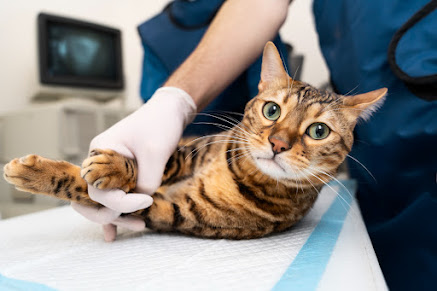What You Need to Know About Cat Diabetes?
Cats are beloved companions, known for their grace, independence, and affection. However, just like humans, cats can also develop various health conditions, and one of the most common feline health issues is diabetes. Diabetes mellitus in cats, commonly referred to as cat diabetes, is a chronic metabolic disorder that affects the body's ability to regulate blood sugar levels. In this comprehensive article, we will delve into the causes, symptoms, diagnosis, treatment, and prevention of cat diabetes.
Understanding Cat Diabetes:
1. Types of Cat Diabetes:
Type 1 diabetes: This occurs when the pancreas fails to produce enough insulin.
Type 2 diabetes: This occurs when the body becomes resistant to insulin or doesn't use it effectively.
Secondary diabetes: Caused by other conditions like pancreatitis, hormonal disorders, or the use of certain medications.
Causes and Risk Factors:
Obesity and Sedentary Lifestyle: Overweight and obese cats are more prone to developing diabetes due to the increased insulin resistance.
A lack of physical activity can contribute to weight gain and insulin resistance.
Genetics and Breed Predisposition: Certain breeds, such as Burmese and Siamese cats, have a higher risk of developing diabetes.
Genetics can play a role in the development of the condition.
Other Contributing Factors:
Age: Older cats have a higher risk of developing diabetes.
Gender: Male cats are more prone to diabetes than females.
Steroid medications: Prolonged use of steroids can increase the risk of diabetes.
Recognizing the Symptoms:
Increased Thirst and Urination: Cats with diabetes tend to drink more water and urinate frequently.
Weight Loss: Despite increased appetite, cats may experience weight loss.
Increased Appetite: Cats may develop an insatiable appetite due to the body's inability to utilize glucose effectively.
Lethargy and Weakness: Diabetic cats may appear tired and less active.
Poor Coat Condition: Cats with diabetes may have a dull, unkempt coat.
Diagnosis and Veterinary Care:
Veterinary Examination:
A thorough physical examination and medical history review will help diagnose diabetes.
Blood Glucose Testing: Blood glucose levels are measured to confirm the diagnosis.
Urinalysis: Urine testing helps identify glucose and other abnormalities.
Fructosamine Test: This test provides information about blood glucose control over the previous few weeks.
Treatment and Management:
Insulin Injections: Most diabetic cats require daily insulin injections to manage their blood sugar levels.
Diet and Nutrition: A high-protein, low-carbohydrate diet is recommended to control blood sugar levels and maintain a healthy weight.
Weight Management: Weight loss, if necessary, is important to improve insulin sensitivity.
Monitoring Blood Glucose Levels: Regular monitoring of blood glucose levels at home helps track the cat's response to treatment.
Preventing Cat Diabetes:
Balanced Diet and Weight Control: Feeding a balanced diet and maintaining an ideal weight can reduce the risk of diabetes.
Regular Exercise: Encouraging physical activity can help prevent obesity and promote overall health.
Routine Veterinary Check-ups: Regular check-ups enable early detection and intervention if any health issues arise.
Conclusion:
Cat diabetes is a serious but manageable condition that requires diligent care and attention. Recognizing the symptoms, seeking prompt veterinary care, and implementing appropriate treatment measures can help diabetic cats live long, fulfilling lives. By promoting a healthy lifestyle, maintaining an ideal weight, and monitoring your feline companion's health, you can contribute to preventing this disease and ensuring your cat's well-being. Remember, early detection and proper management are the keys to a healthier and happier cat.






